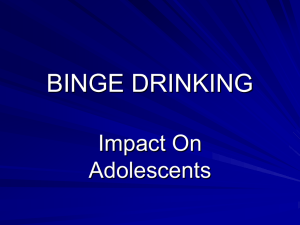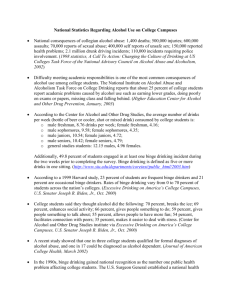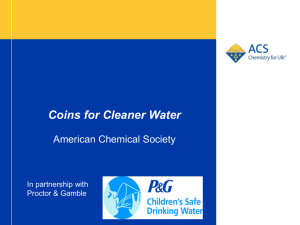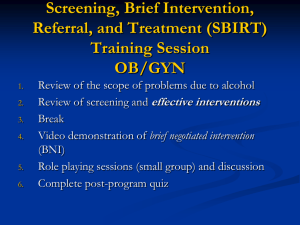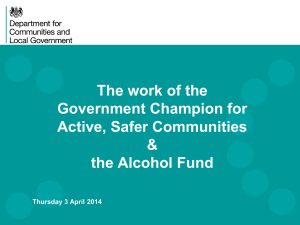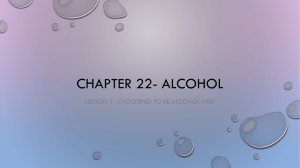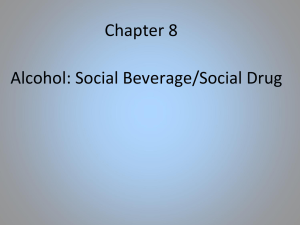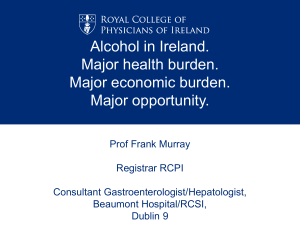Presentation EU October 19th - Alcohol Abuse among Adolescents
advertisement
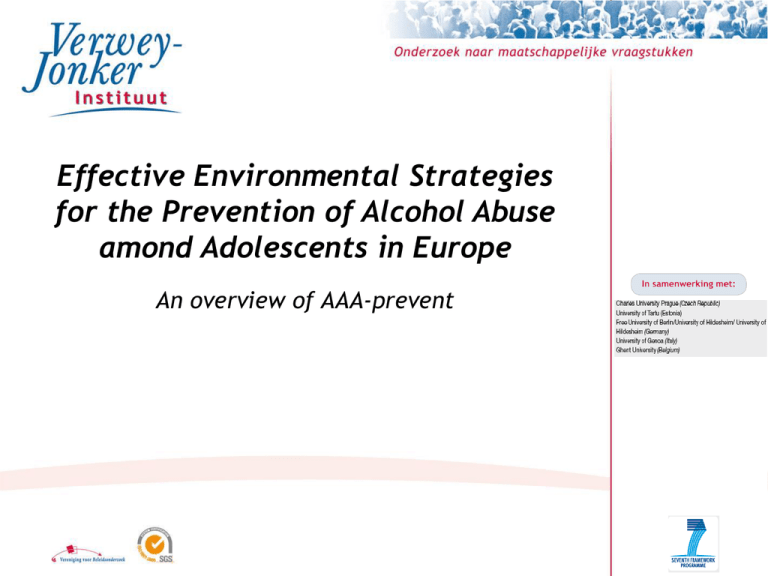
Effective Environmental Strategies for the Prevention of Alcohol Abuse amond Adolescents in Europe An overview of AAA-prevent Underage drinking worldwide problem Traffic crashes, risky driving behaviour Intended and unintended injuries Precursive to violence Associated with problem behaviours Affects brain development Associated with alcohol related disorders later Europe Highest alcohol consumption among youngsters Especially in western and eastern Europe Divergent picture of prevalence rates Problematic alcohol drinking is increasing Initiation age is lowering Number of girls involved in heavy drinking is increasing Preventive possibilities Understanding patterns of alcohol use Related to the country where you grow up Related to risk factors which are associated with alcohol use Sample ISRD-sample (2006; see Junger-Tas et al., 2009, 2011) 57.771 youngsters 25 European countries Age 12-16 years Abstinence Last month life time beer Last month and life time spirits Binge drinking beer Binge drinking spirits Europe and country Theory Family Strong relation on adolescents use of alcohol both on how much and on how often Family structure and family control/bonding protect Family affluence as well as negative life events lead to more use Alcohol use and Family Risk Factors (AOR) School Strong effect on alcohol use Important setting to influence adolescent alcohol use School disorganization and social bonding show strong effects Alcohol use and School Risk factors (AOR) Peer Inportant domain when relation with family becomes less and with friends stronger We find here the strongest relation Delinquent friends or deviant behaviour Alcohol use and Peer Risk factors (AOR) Individu Low self-control and Attitudes towards violence are related to alcohol use Important factors for preventive action Alcohol use and Individual Risk Factors (AOR) Community/Neighbourhood Bonding to neighbourhood decrease alcohol use of adolescents Adolescents who live in disorganized neighbourhood use more alcohol Alcohol use and Neighbourhood Risk Factors (AOR) Multilevel analysis Influence of country on alcohol use Combination of individual variables and country variables Analyzing patterns of use ICC Alcohol life time prevalence 14% Alcohol last month prevalence 9% Drunkeness 10% Binge drinking 10% Multilevel class analyse as an example Alcohol use ever Alcohol use last month Drunkeness Binge drinking Abstainers Latent classes traditional Abstainers (37,1%) Moderate drinkers (39,6%) Heavy drinkers (23,3%) Latent classes of countries LOW drinking countries (n=12.879; N=7: BosniaHerz., Cyprus, France, Iceland, Norway, Portugal, Spain). low drinking countries (n=16.179; N=6: Armenia, Belgium, Italy, Russia, Slovenia, Sweden) heavy drinking countries (n=17.865; N=8: Austria, Denmark, Finland, Germany, Ireland, Netherlands, Poland, Estonia) HEAVY drinking countries (n=10.101; N=4: Czech Republic, Estonia, Hungary, Lithunia) Multilevel classes HEAVY heavy LOW Low Total Abstainers 16,40 (1657/2,9) 32,21 (5754/10,1) 58,77 (7686/17,4) 30,1 (6157/10,8) 37,14% (21,254) (Moderate drinkers 52,97 (5351/ 9,3) 39,05 (6976/12,2) 29,52 (3861/6,7) 44,26 (7166/12,5) 40,81% (23,354) Heavy drinkers 30,62 (3093/ 5,4) 28,74 (5135/8,9) 11,71 (1532/2,7) 17,65 (2856, 5) 22,05% (12,616) Total 10,101 17,865 12,879 16,179 57,224 Multilevel analysis of prevention Family School Peers Individu Neighbourhood Country Effective programs Target Group Age Risk Factor Method Literature Organisation Evaluation Thanks! Harrie Jonkman HJonkman@Verwey-Jonker.nl Majone Steketee MSteketee@Verwey-Jonker.nl

